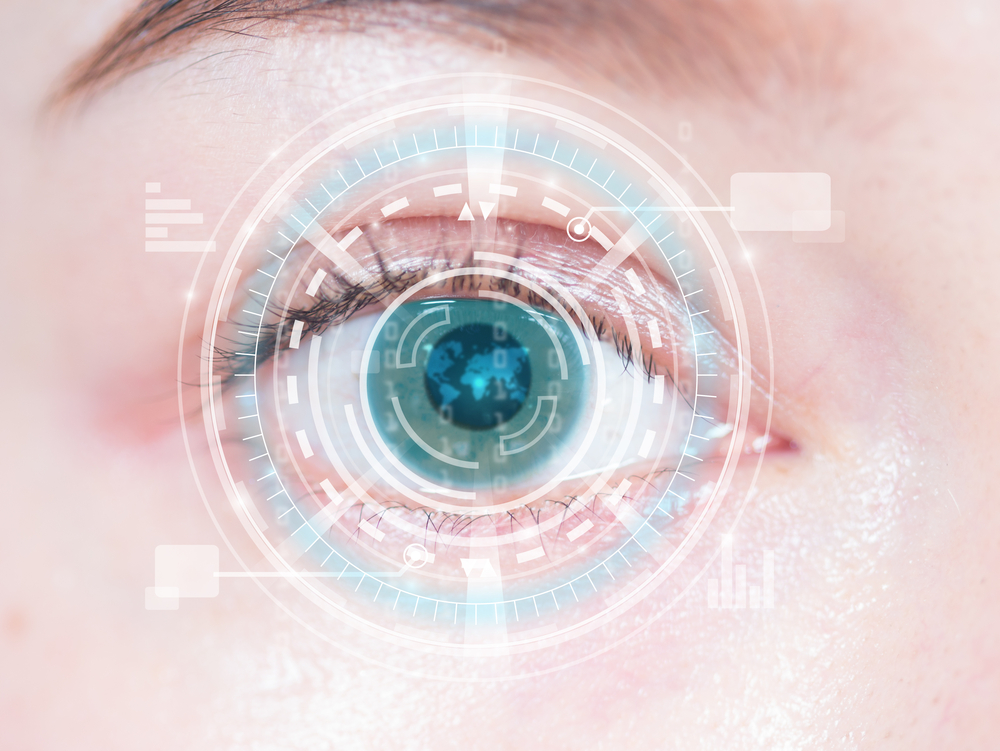How Tattoo Ink and Gold Could (One Day) Help Restore Vision

An artificial retina made of organic ink and gold may be able to restore vision someday, a new study suggests.
The new device is an extremely thin sheet of organic crystal pigments, which are widely used in printing ink, cosmetics and tattoos. When these pigments are arranged in a particular layered geometry, the crystals can absorb light and convert it to electric signals, just like the light-sensitive cells — called photoreceptors — in the eye's retina and make vision possible, according to the study, published May 2 in the journal Advanced Materials.
The device holds promise for restoring vision for the millions of people with diseases such as retinitis pigmentosa, a genetic eye disease, and age-related macular degeneration, a leading cause of blindness among the elderly.
In these diseases, photoreceptors are lost, but other neurons in the retina that process the electric signals and transmit them to the brain are preserved. "We have these neurons that are perfectly healthy and functioning," said senior study investigator Eric Glowacki, a researcher who studies organic electronics at Linköping University in Sweden. "So it follows, can we bypass the photoreceptors and just stimulate the neurons directly?"[Super-Intelligent Machines: 7 Robotic Futures]
Bypassing the photoreceptors in the eye is not a new idea. There are other retinal implants that are being tested in humans or that are already on the market. Some use external cameras that transmit to electrodes implanted into the retina, and power the device using another unit implanted behind the ear. Other teams are exploring wireless approaches using miniaturized solar cells as stand-ins for photoreceptors.
What sets apart the new implant is that it is wireless and uses organic compounds instead of silicon-based material, making it more likely to be accepted by the body.
"This is pretty unique," said Derrick Cheng, a researcher at Brown University who studies biohybrid approaches to retina implants but was not involved with the new study. "The eye naturally has a pigmented layer in it. So this approach is more akin to what the retina actually looks like."
Sign up for the Live Science daily newsletter now
Get the world’s most fascinating discoveries delivered straight to your inbox.
The device is also extremely thin, which is critical for anything that's to be implanted in the delicate eye tissue, Cheng told Live Science. Indeed, at only 80 nanometers, it is 100 times thinner than a single neuron and 500 times thinner than the thinnest silicon retinal implants, according to the study.
It is difficult to create wireless implants that can generate enough power on their own to activate neurons. For Glowacki and his colleagues, finding the solution involved testing and optimizing different combinations of pigments that are good at absorbing light. They put two layers of two different pigments on a layer of gold. When this sandwich is exposed to light, electrons accumulate on top, and the positive charge goes to the bottom, loading up the gold layer. When placed in salt water, which is similar to the environment inside the eye, the device generates an electric field that is sensed by neighboring neurons.
When it came time to test the device on a retina, Yael Hanein, a professor of electrical engineering at Tel Aviv University in Israel, and her team extracted retinas from chicken embryos. As a chicken grows in the egg, its eyes develop by day 14, but the photoreceptors do not form until day 16. This gives researchers a two-day window to get their hands on a "blind" retina.
After attaching the device to the extracted chicken retina, the researchers shined light on it and found that it generated enough electricity to stimulate the rest of the retinal neurons. "That was the crowning achievement," Glowacki told Live Science.
The team is now testing the device in live rabbits, with the help of volunteer human retina surgeons. Although the rabbits are not blind, they naturally don't see red because they have photoreceptors only for green and blue spectrums. If the retina implant, which picks up the red spectrum, works as intended, the researchers would be able to see the resulting neuronal response in the animals' visual cortex, Glowacki said. In other words, they'd be able to see if the device allowed the animals to see red.
Original article on Live Science.










